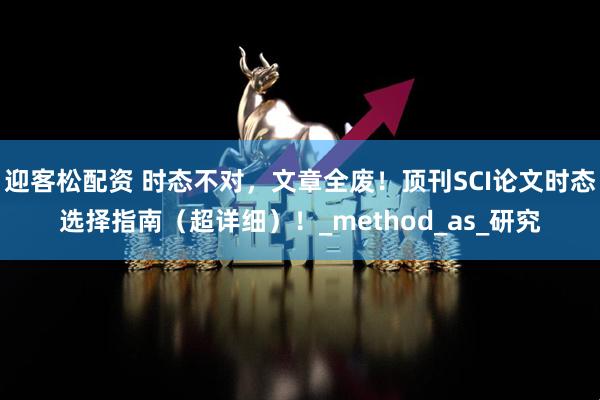日期:2025-07-22 07:16:38

写SCI论文时,需要特别注意时态的运用,时态用得好,论文逻辑更清晰,表达更准确。那么SCI论文中的动词时态该怎么选择呢?
SCI论文通常包括标题、摘要、引言、方法、结果、讨论、结论等部分,各部分常用时态还不一样哦!
1
标题
一般现在时:用于概括研究的主要内容或揭示核心发现,使标题具有通用性和永恒性。
2
摘要
一般情况下,研究背景,实验目的,论文结论,采用一般现在时。实验方法,结果及发现,采用过去时。
研究背景:A method to select non-responders as early as possible is essential for preventing unnecessary toxicity.
展开剩余82%论文结论:The present study suggests that ...
实验方法:Human breast cancer cells were injected into nude rats.
实验结果:A new in vivo breast cancer model was successfully established.
当然,有些杂志也会专门有些比较“特别”的要求,比如Cell,要求Abstract全部使用一般现在时。大家可以自行体会下:
Here we present a unifying hypothesis about how messenger RNAs, transcribed pseudogenes, and long non-coding RNAs “talk” to each other using micro RNA response elements (MREs) as letters of a new language. We propose that this “competing endogenous RNA” (ceRNA) activity forms a large-scale regulatory network across the tranome, greatly expanding the functional genetic information in the human genome and playing important roles in pathological conditions, such as cancer.
3
引言
在引言部分,不同的内容需要使用不同的时态:
描述一个现象或事实时:使用现在时。
如:“Lymph node metastasis remains a critical factor in the prognosis of early colorectal cancer.”
描述别人的工作:使用过去时。
如:“Previous studies showed that solid-state fermentation could significantly increase phenolic content in various grains.”
复述别人的结论:使用现在时。
如:“It is known that phenolics and antioxidant activity are crucial for health benefits and disease prevention.”
4
材料与方法
描述写论文之前作者所做的工作,用一般过去时。
如:The proliferation of Huh-7, HCT-116, HeLa cells was tested by CCK-8 kit.
这部分一般时态变化比较少,没什么争议。
5
结果
一般过去时:用于描述研究过程中实际观察到或测量到的具体结果。
6
讨论
对此次研究结果的总结,用过去时。
如:In this study, we identified lincRNA-p21 as a key regulatorof cell proliferation and apoptosis.
对Results部分的结果描述进行更深入的分析和讨论,阐述结果的意义,用一般现在时 。
如:However, certain circRNAs are predominately expressed in one gene locus and present at substantial levels that suggest these species are purposefully produced.
7
结论
强调过去的研究成果采用过去时,表达将来的研究方向或研究前景用将来时。
如:In conclusion, our study provided a portrayal of circRNAs in different human normal and cancerous tissues.
阐述自己研究成果的意义用一般现在时。
如:Taken together, these lines of evidence reveal a new level of diversity in the tranome and their regulation in human cells.
提出研究前景或将来的研究方向用将来时,这部分也可能出现在Discussion中。
如:It will be interesting to explore whether lincRNA-p21 can interact with epigenetic factors.
一般说来,一个段落中的时态应保持一致,不宜混用。掌握时态的使用规则可以使SCI论文更加规范和易于理解。在撰写过程中,需根据内容选择合适的时态,以便更好地表达研究过程和结果,提升论文的科学性和说服力。总之,掌握SCI论文各部分的时态运用,让你的论文逻辑更清晰,表达更准确。
发布于:湖北省道正网提示:文章来自网络,不代表本站观点。